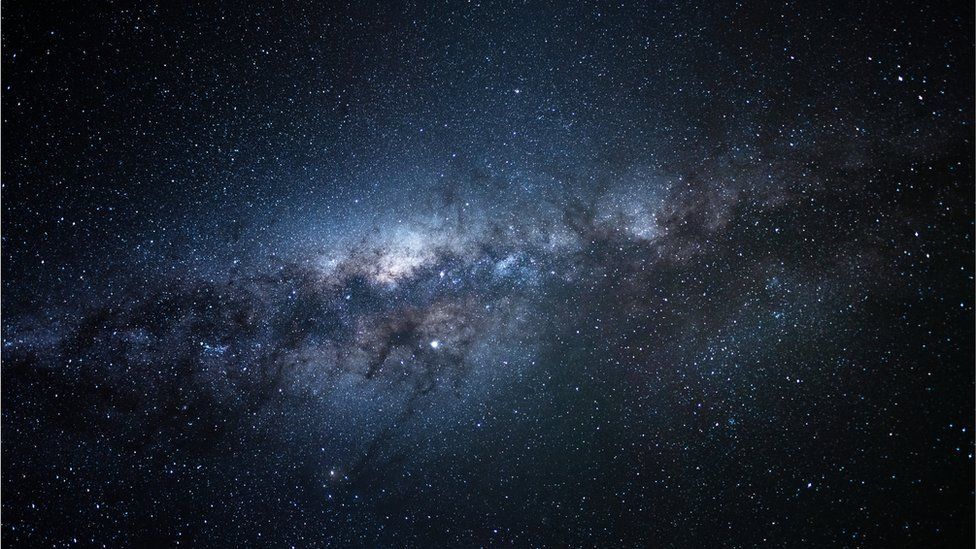Milky Way: Astronomers think there are more galaxies similar to ours than we thought
- Published
- comments

Astronomers have put together some new research into galaxies like ours - and they think there could be more out there!
They're looking for disc galaxies - which is what our galaxy, the Milky Way, is.
These galaxies could be the kind where life can develop, based on how life developed in our own one.
Experts in both the UK and Canada reckon that galaxies that look like the Milky Way are 10 times more common than we previously thought.
What is the Milky Way?
If you're somewhere with not much light pollution at night time, you might be able to catch a glimpse of it on a clear night
The Milky Way is our galaxy. It's in a disc shape, with spiral arms - and Earth sits inside one of the arms.
It's called the Milky Way because of the way it looks in the sky - it inspired a Greek myth that a goddess put milk up into the sky.
It's made up of two discs - one with smaller stars like our Sun - and a disc of older stars extending outside the spiral.
What has been discovered?
Could there be more galaxies like ours out there?
Researchers from the University of Manchester in the UK and the University of Victoria in Canada have been looking at the James Webb Space Telescope to search for galaxies.
James Webb is a huge telescope that can see really far into the universe's past. This is because it is big enough to take in lots of light from the universe.
WATCH: BBC science editor Rebecca Morelle explains how the James Webb Space Telescope will work
Light from a long time ago can take a long time to get to Earth, so if you can look really far into the universe, you can essentially look back in time.
Technically - if experts had a telescope big enough - they could one day look as far back as the big bang.
The research team found that galaxies like ours - disc galaxies - are the most common type of galaxy in the universe.
Scientists used to think that it was quite difficult for galaxies like the Milky Way to form, because the previous telescope they used could not see as much, so this could be a pretty big discovery.
Three crazy James Webb telescope discoveries:
What does this mean?
The research could help us learn more about other galaxies like this one - the Andromeda Galaxy
Christopher Conselice, who is one of the professors at the University of Manchester on the study, says that this research is changing their understanding of how galaxies are formed.
These results also suggest important questions about dark matter in the early universe which we know very little about.
Chrisopher Conselice, Professor of extragalactic astronomy at the University of Manchester
The team said this new research proves how important the James Webb Space Telescope is, because it can discover exciting new information about the universe.
Because of how life developed in our disc galaxy, astronomers hope that by learning more about them, and others in the universe, we might be able to see how life could form on other planets.
